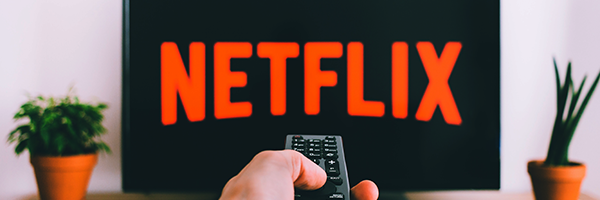Today, as we watch Netflix (NFLX) edge toward a drop of 35% at the close on yesterday’s huge earnings disappointment, the name of the game is “Find the new Netflix.”
Other streaming service companies? Sure. An obvious choice. Shares of Disney (DIS) were off 5.55% at the close. Warner Brothers Discovery (WBD) was down 6.04%. Roku (ROKU) is lower by 6.173%. FuboTV (FUBO) has given up 6.44%.
Some choices require more of a step back to look at the larger causes of Netflix’s drop in subscribers. I’ll be putting up a YouTube video in the next couple of days (Why don’t you subscribe to my YouTube channel–it’s free–so that you get notified when I post a new video? They usually go up on YouTube a few hours before the end of day email goes out from this site at 5 pm. Eastern Time) that argues that food delivery services such as Uber Technologies’ (UBER) Uber Eats and DoorDash (DASH) face some of the same economic headwinds that swamped Netflix.
Let me take another step farther back to look at the one of the larger economic forces revealed by the Netflix miss.
I’d argue that the Netflix miss should put pricing power and questions of what price increases will hurt demand up near the top of your stock picking check list. Especially since the streaming service’s loss of 200,000 subscribers this quarter and the projected loss of 2 million subscribers next quarter qualifies as just the first shoes to drop.
For a while now, it has seemed, to the constant amazement of economists and Wall Street analysts, that we have repealed one of the key rules of economics. Companies ranging from Starbucks (SBUX) to Costco (COST) to Amazon (AMZN) to Netflix have been able to raise prices without seeing any appreciable drop in demand. Raise the cost of a membership in Amazon Prime, for example, and see, amazingly, almost nobody cancel.
But the Netflix miss leads me to ask if that might be changing. No, the drop in subscribers didn’t follow directly on the company’s latest price increases. But could it be that with inflation running at 8.5% and with fears of a Recession increasing and with consumers worried about incomes keeping up with prices that we’re seeing folks take a look at the family budget and at levels of personal spending and decide that they can cut back here or substitute there. I would like to note that the average U.S. household that subscribes to at least one streaming service subscribes to five. Does the family need them all? Which ones provide the best value? (The 2022 State of Streaming survey from FanDom says the value thumbs up goes to Disney Plus because its content mix includes so much from popular genres such as super hero adventures.) Where can the budget get a boost from substituting a cheaper alternative? (In the case of Netflix that cheaper alternative looks like it might be sharing a password with a friend since the price there is $0.)
When I made Netflix and Starbucks my first Recession Sells it wasn’t because I had seen this big miss from Netflix in my crystal ball, but because I thought worries of a Recession and high rates of inflation were changing the pricing power equation for many companies. I suggested giving a pass to companies facing lots of roughly equally attractive products from competitors (like Netflix) and to companies where it was relatively easy to substitute a cheaper and good enough product from a competitor (Starbucks).
The larger lesson of Netflix is that this kind of caution is increasingly important in this economy and market environment.


